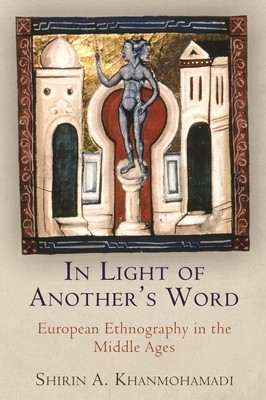
- We will send in 10–14 business days.
- Author: Shirin A Khanmohamadi
- Publisher: University of Pennsylvania Press
- ISBN-10: 151282481X
- ISBN-13: 9781512824810
- Format: 15.2 x 22.9 x 1.2 cm, softcover
- Language: English
- SAVE -10% with code: EXTRA
Reviews
Description
Challenging the traditional conception of medieval Europe as insular and even xenophobic, Shirin A. Khanmohamadi's In Light of Another's Word looks to early ethnographic writers who were surprisingly aware of their own otherness, especially when faced with the far-flung peoples and cultures they meant to describe. These authors--William of Rubruck among the Mongols, John Mandeville cataloguing the world's diverse wonders, Geraldus Cambrensis describing the manners of the twelfth-century Welsh, and Jean de Joinville in his account of the various Saracens encountered on the Seventh Crusade--display an uncanny ability to see and understand from the perspective of the very strangers who are their subjects.
Khanmohamadi elaborates on a distinctive late medieval ethnographic poetics marked by both a profound openness to alternative perspectives and voices and a sense of the formidable threat of such openness to Europe's governing religious and cultural orthodoxies. That we can hear the voices of medieval Europe's others in these narratives in spite of such orthodoxies allows us to take full measure of the productive forces of disorientation and destabilization at work on these early ethnographic writers. Poised at the intersection of medieval studies, anthropology, and visual culture, In Light of Another's Word is an innovative departure from each, extending existing studies of medieval travel writing into the realm of poetics, of ethnographic form into the premodern realm, and of early visual culture into the realm of ethnographic encounter.EXTRA 10 % discount with code: EXTRA
The promotion ends in 19d.18:26:02
The discount code is valid when purchasing from 10 €. Discounts do not stack.
- Author: Shirin A Khanmohamadi
- Publisher: University of Pennsylvania Press
- ISBN-10: 151282481X
- ISBN-13: 9781512824810
- Format: 15.2 x 22.9 x 1.2 cm, softcover
- Language: English English
Challenging the traditional conception of medieval Europe as insular and even xenophobic, Shirin A. Khanmohamadi's In Light of Another's Word looks to early ethnographic writers who were surprisingly aware of their own otherness, especially when faced with the far-flung peoples and cultures they meant to describe. These authors--William of Rubruck among the Mongols, John Mandeville cataloguing the world's diverse wonders, Geraldus Cambrensis describing the manners of the twelfth-century Welsh, and Jean de Joinville in his account of the various Saracens encountered on the Seventh Crusade--display an uncanny ability to see and understand from the perspective of the very strangers who are their subjects.
Khanmohamadi elaborates on a distinctive late medieval ethnographic poetics marked by both a profound openness to alternative perspectives and voices and a sense of the formidable threat of such openness to Europe's governing religious and cultural orthodoxies. That we can hear the voices of medieval Europe's others in these narratives in spite of such orthodoxies allows us to take full measure of the productive forces of disorientation and destabilization at work on these early ethnographic writers. Poised at the intersection of medieval studies, anthropology, and visual culture, In Light of Another's Word is an innovative departure from each, extending existing studies of medieval travel writing into the realm of poetics, of ethnographic form into the premodern realm, and of early visual culture into the realm of ethnographic encounter.

Reviews